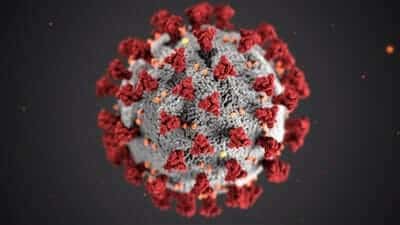by Johanna Patricia A. Cañal, MD, MHA, MSc
Ask any doctor. Viruses are scarier than bacteria or parasites or fungi.
Ok. So what’s the big deal? Good grief, they’re not even complete cells! Technically, they’re just genetic material and protein that’s looking for a host.
And maybe that’s precisely its problem. They can attach to a multitude of cells… even a multitude of animals. HIV skipped to humans from rhesus monkeys. Bird flu transfers to humans too.
Another thing is: there is no treatment for a viral infection. No medicine will kill a virus directly. At best, the medications for viral illnesses can either block the entrance of a virus into a cell or prevent the virus from reproducing. In both instances, we wait out the virus, hoping it will die out on its own.
In blocking a virus from entering a cell, we also block its source of nutrition. So, theoretically, that virus should die out by starvation. A patient will just have to keep taking the drug. It acts like a gate. If you stop the medicine, it’s like opening the gate and rolling out the red carpet for this virus.
In preventing its reproduction, the hope is that the virus will get old on its own and just die without any descendants to carry on its genetic line. That’s the hope. There is the possibility that the virus will just go to sleep, become dormant and wake up at some future point. We hope not. But it’s possible. This happens with the measles virus.
Another scary thing about viruses is that they mutate. They can change their genetic material. In simplified terms, a drug that was developed to block a round virus now has to deal with a square virus. It won’t work. It just won’t work. This is why the flu vaccine changes every year—because the flu virus is slightly different every year.
The most ideal thing to do is prevent the viral infection in the first place…and that’s what a vaccine is for.
Hello!
This short article is part of a series of articles that is designed to make health care more understandable to non-doctors.
As a way of disclosure, I am a radiologist and a radiation oncologist. My strengths, therefore, are diagnosing illness, particularly cancer, and cancer treatment. Thus, I will be talking about medical tests and what these are about.
I shall also be talking about the dreaded disease, cancer. In the 2nd decade of the 21st century, cancer is the #4 cause of death worldwide. NUMBER 4! It used to be #10. It has obviously been going up. The number 1 and 2 killers are cardiovascular diseases…translated into heart attacks and strokes. Number 3 is pneumonias and lung diseases.
The previous century was known as the century of infectious diseases. The most common causes of disease and death were bacterial and viral pneumonia and tuberculosis. The present century is the century of the lifestyle disease. That is, infections don’t play as big a part as lifestyle diseases. What are those? Heart disease, strokes, cancers and injuries/accidents.
But then again, the 21st century has just started, and we already have a pandemic. One never knows what will happen in the next 10, 20 or 30 years. Thus, this series will discuss a range of topics, hopefully the topics most relevant to you.
If there is a topic that you want clarified, please do drop me an e-mail at [email protected]. Please just fill in the subject line with: [SULIT] Your question

Johanna Patricia A. Cañal, MD, MHA, MSc
























